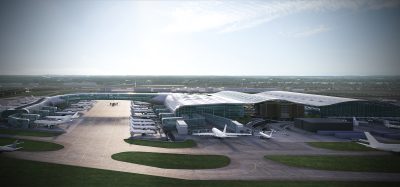The Single European Sky (SES) – the airline perspective
Posted: 8 August 2011 | Ulrich Schulte-Strathaus, Secretary General of the European Association of Airlines
The Single European Sky programme, to rationalise the airspace above the Single Market, has been hailed as Europe’s single biggest environmental programme, and by EU Transport Commissioner Siim Kallas as the most important project in his portfolio. It promises a huge efficiency improvement over the current patchwork of national airspaces, with the potential to halve the bills that airlines pay for air navigation services, from an average of €800 to €400 per flight, and to significantly reduce delays and their associated costs borne by consumers. It is genuinely a win-win-win endeavour…
The Single European Sky (SES) programme, to rationalise the airspace above the Single Market, has been hailed as Europe’s single biggest environmental programme, and by EU Transport Commissioner Siim Kallas as the most important project in his portfolio. It promises a huge efficiency improvement over the current patchwork of national airspaces, with the potential to halve the bills that airlines pay for air navigation services, from an average of €800 to €400 per flight, and to significantly reduce delays and their associated costs borne by consumers. It is genuinely a win-win-win endeavour.
Despite all this, the Single Sky has had a long and turbulent history dating back over 20 years. The institutional process which leads us to where we are today is more recent, however. The first major landmark was the establishment of the first Single European Sky Regulation in November 2000, which created the legislative framework for what was to follow.
What came next, in 2008, was the second Single European Sky legislative package (‘SES II’), which spelled out when and how the Single Sky would be implemented. At this point, two acronyms which had previously existed only in specialist circles came into common usage – FABs (Functional Airspace Blocks) and SESAR (Single European Sky ATM Research). Together with a third crucial element of the package, a performance target mechanism, these were given specified timelines.
These regulatory proposals were developed by the European Commission, endorsed by the European Parliament and EU Member States, and welcomed by the airline sector. Scarcely could there have been more harmony and commonality of purpose. Why, then, has the transition from the vision to the reality proved such a tough nut to crack?
Infrastructure – whether road, rail or air, is an expression of national sovereignty; no-one wants ‘Brussels’ to build roads or say where they should be built. But the Single Market is a reality, and a trans-European infrastructure project such as this not only provides for mobility and prosperity, it greatly enhances the competitiveness of Europe. That is why the Single Sky, over the Single Market, was indeed visionary and a major breakthrough. To harmonise policies across national administrations requires that cultural, organi – sational and procedural differences are set aside – along with practices which may have more to do with the way things have always been done, rather than their effectiveness.
One of the fundamental changes which the Single Sky will bring is in the way air navigation services are charged for. Historically, this has been on a cost-recovery basis, with each national system calculating a unit rate sufficient for expected traffic to cover budgeted costs. Any under-recovery in one year is simply factored into the cost base for the next. This places national authorities in a zone of extreme comfort; there are effectively no budgetary constraints on service provision. The performance monitoring element of the Single European Sky, mandating cost-efficiency as well as safety and delay targets, should bring about massive reductions in charges, driven by efficiency gains, with the most inefficient service providers expected to show the biggest improvements.
So where do we stand at the moment? Let us take the positives first. The enthusiasm of the European Commission for the scheme is undimmed, and the airline sector takes encouragement from the commitment of Commissioner Kallas and his staff to move the process forward. We are encouraged too by the readiness of the European Parliament to throw its weight behind the project. The Network Management function is well on track. B
ut then there are the less positive aspects. The programme has, undeniably, generated a great deal of hostility from the unions, which regard it as affecting job security. This is shortsighted. The Single Sky is not about fewer controllers working harder – the individual’s workload will be eased as complexity and dysfunctionality is taken out of the system. No, it is about the ability of the rationalised airspace to absorb more flying, which will give rise to different, new and even higher quality demands on air traffic managers. Meanwhile, the benefits will flow from more direct routes, more efficient flight profiles and reduced holding on the ground and in the air.
The FAB’s claim to be truly ‘functional’ does not, at this preliminary stage of their development, constitute a convincing argument. The very fact that they are delineated by national boundaries is a give-away. Within each one, the component national systems will have to co-operate as never before if they are to deliver. If they succeed, they will promote regional defragmentation, strengthen regional identity and become a benchmark for productivity gains. To ignore this would be a huge mistake for national administrations.
The very first round of performance targetsetting is already running into difficulties. Last year’s EU-wide target of 3.5 per cent annual efficiency improvement between 2013 and 2016 was already modest, given the ready availability of ‘quick win’ solutions – yet the Member States first rejected it, before accepting under strong pressure from the Commission.
Now comes the much harder task of meeting that target through a bottom-up process at national level. The deadline for National Supervisory Authorities to adopt performance targets from their individual providers and FABs passed at the end of June. All indications are that those involved are dragging their feet, resisting genuinely ambitious targets. Are Member States not going to walk their talk? This is alarming.
Under the next step the Commission will confirm whether these national performance targets are sufficient in the context of the EU-wide performance targets. The Commission will have to resist attempts from Member States to impose weak targets on their local air navigation service providers and FABs. If the Commission fails to ensure adherence, the EU will have lost credibility – vis-à-vis its citizens, its industry and internationally.
SESAR is widely seen as a subsequent phase of the Single Sky programme, bringing in new technology to move the process on, once the initial fixes have been achieved. This is wrong; financing, developing and deploying the right technology is crucial, and the key decisions have to be taken now. SESAR requires €30 billion in upfront investments, so it will fail if no public funding is provided to support accelerated deployment. Moreover, clear governance structures will need to be established to ensure synchronised deployment of ground and airborne infrastructures.
Technical capabilities have to be consistent, both between FABs and between aircraft and ground installations. Many airlines simply cannot afford the cost of retro-fitting their fleets with SESAR-compliant avionics, yet SESAR will not work until a very substantial level of compliance is achieved.
In conclusion, through the first and second SES packages the Commission won political support for a project of overriding importance. That support must now be translated into timely, co-ordinated and result-oriented implementation. European competitiveness must be developed, not in Brussels but across Europe, by all Member States, EU institutions and industry together. We are arriving at the moment of truth.
About the Author
Ulrich Schulte-Strathaus, born in 1953 in Australia, was educated in England and France before graduating in law in Germany. In 1981, he joined Lufthansa as the manager responsible for collective labour negotiations. He was appointed the following year as Liaison Officer to the EEC, reporting directly to the airline’s CEO on European political affairs. Six years later, he was appointed Head of Industry Relations in Lufthansa’s newly created Marketing Division. As Head of Passenger and Cargo Tariffs, Ulrich was Lufthansa’s representative at IATA Tariff Consultations. He focused his attention on readjusting Lufthansa’s tariff policy to meet the new EU legal requirements in an otherwise largely regulated international environment. In 1992, he was appointed Vice President Corporate International Relations and Government Affairs. Ulrich successfully enlisted political support for Lufthansa’s privatisation. He also developed, and subsequently implemented a policy, which, endorsed by the company’s Board, helped pave the way for the German Government to negotiate an Open Skies agreement with the United States of America. Furthermore, he was pivotal in securing regulatory approval from the EU Competition Authorities for the company’s alliance arrangements with United Airlines, of the US, and other European carriers. Ulrich, an alumni of the Harvard Business School, is non-executive member of several boards of directors of renowned institutions, and member of the British Aviation Club.
The International Airport Summit is open for registration!
Date: 19 – 20 November 2025
Location: JW Marriott Hotel Berlin
At our flagship event of the year, we will dive into the future of airport operations, with expert-led sessions on passenger experience, innovative smart technologies, baggage handling, airside operations, data, security, and sustainability.
This is where global airport leaders come together to share insights, challenges, and real-world solutions.
Limited complimentary passes are available for eligible professionals – first come, first served!

















